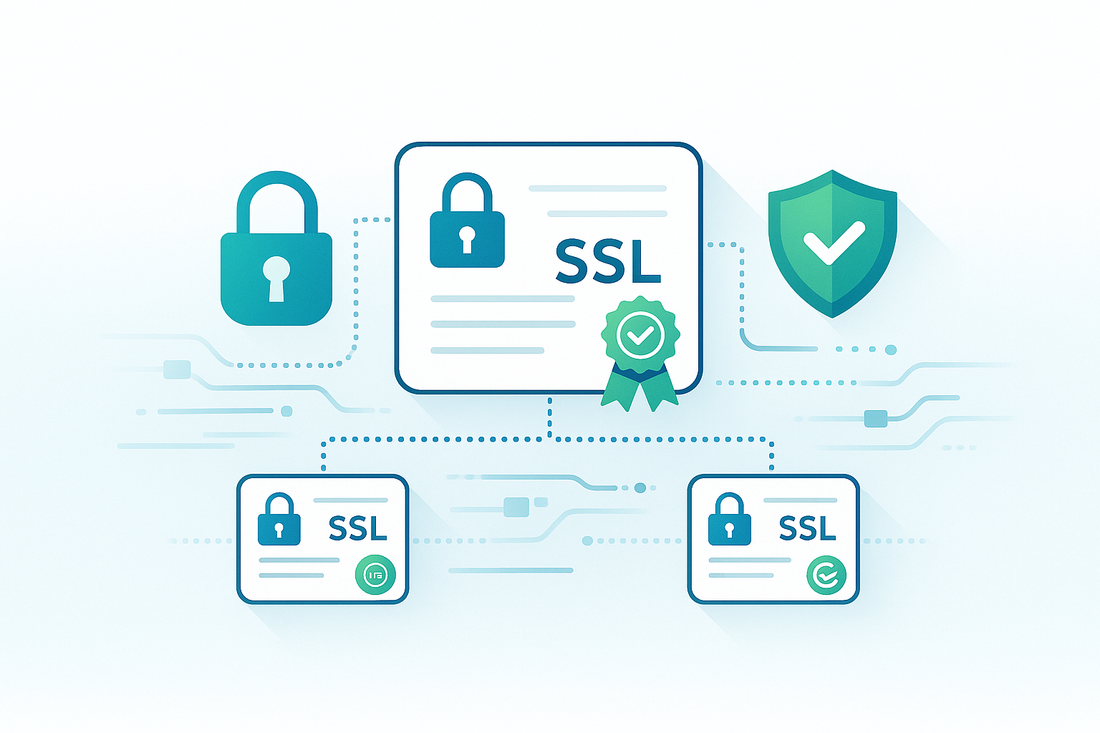
Intermediate Certificates Guide
James RodriguezShare
Intermediate SSL Certificates play a crucial role in the digital Certificate hierarchy, forming an essential bridge between root SSL Certificates and end-entity SSL Certificates.
These vital components of the Public Key Infrastructure (PKI) help establish chains of trust that secure millions of websites and digital transactions across the internet.
Understanding how intermediate SSL Certificates function is essential for proper SSL Certificate implementation and management.
What Are Intermediate SSL Certificates
An intermediate SSL Certificate, also known as a subordinate Certificate Authority (CA) SSL Certificate, serves as a crucial link in the SSL Certificate chain.
Root SSL Certificates issued by trusted Certificate Authorities sign these intermediate SSL Certificates, which in turn are used to sign end-user SSL Certificates.
This hierarchical structure creates a chain of trust that browsers and operating systems use to verify the authenticity of SSL Certificates presented by websites.
The primary purpose of intermediate SSL Certificates is to enhance security by protecting root SSL Certificates.
Since root SSL Certificates represent the highest level of trust in the PKI system, they are kept extremely secure and offline.
Intermediate SSL Certificates allow Certificate Authorities to conduct daily signing operations without exposing root SSL Certificates to potential security risks.
Understanding Certificate Chains
SSL Certificate chains, also called certification paths, typically consist of three main components : the root SSL Certificate, one or more intermediate SSL Certificates, and the end-entity SSL Certificate.
When a browser encounters an SSL Certificate, it verifies the entire chain starting from the end-entity SSL Certificate up to the trusted root. Each intermediate SSL Certificate in the chain must be valid and properly signed by its parent SSL Certificate for the verification to succeed.
Modern SSL Certificate implementations often use multiple intermediate SSL Certificates, creating longer chains that provide additional security layers and operational flexibility for Certificate Authorities.
These chains must be properly configured on web servers to ensure smooth SSL Certificate validation. Missing intermediate SSL Certificates can cause SSL Certificate errors in browsers, even when the end-entity SSL Certificate is valid.
Installing and Managing Intermediate SSL Certificates
Proper installation of intermediate SSL Certificates requires attention to detail and understanding of server configurations.
When Trustico® provides SSL Certificates to customers, the necessary intermediate SSL Certificates are typically included in the SSL Certificate bundle.
System administrators must ensure all intermediate SSL Certificates are installed in the correct order and properly configured on their web servers.
Common issues with intermediate SSL Certificates often stem from incomplete SSL Certificate chains or incorrect installation order.
Web servers must present the complete chain, starting with the end-entity SSL Certificate, followed by any intermediate SSL Certificates, in the correct sequence.
While root SSL Certificates are not included in the chain presentation, they must be present in the client system trusted root store.
Troubleshooting Certificate Chain Issues
When encountering SSL Certificate validation problems, examining the SSL Certificate chain is a crucial diagnostic step.
SSL Certificate chain issues can manifest as browser warnings, connection errors, or application failures. Modern diagnostic tools can verify chain integrity and identify missing or incorrectly ordered intermediate SSL Certificates.
Common troubleshooting steps include verifying the presence of all required intermediate SSL Certificates, confirming proper chain order, and ensuring intermediate SSL Certificates have not expired.
Certificate Authorities occasionally update their intermediate SSL Certificates as part of regular security practices or in response to industry changes.
Organizations must maintain awareness of these updates and implement new intermediate SSL Certificates when required.
Proper SSL Certificate chain maintenance is essential for maintaining secure and reliable SSL Certificate implementations.



